|
Tao Te Ching
THE TAOISM OF LAO TZU
|
Tao Te Ching
|
The Book
The Taoism of Lao Tzu Explained. The great Taoist philosophy classic by Lao Tzu translated, and each of the 81 chapters extensively commented. Click the image to see the book at Amazon (paid link). |
Legend has it that he was an older contemporary of K'ung Tzu, Confucius, who lived 551 to 479 BC, and whose existence is well documented in historical sources. The life of Lao Tzu, on the other hand, was not explicitly recorded until Shih chi, the book of Chinese history written by Ssu-ma Ch'ien around 90 BC. He even describes a meeting between Lao Tzu and K'ung Tzu, where the former is portrayed as both older and wiser, giving the latter a lesson that is almost humiliating.
Old Master
Age equaled wisdom and superiority in ancient China, and Confucianism was the leading philosophy already soon after the death of its creator, so Taoists would have wished for Lao Tzu to be the senior of the two. Thereby, his thoughts would gain the prestige of being of older origin.Taoism and Confucianism are sort of competing philosophies, largely opposites of each another. Where Confucianism preaches obedience and strict conformity to social rules and human authorities, Taoism is almost indifferent to formalized social order. Instead, it advocates the return to a natural state of things, where the emperor and the farmer must be equally yielding and hesitant to spring into action.
Also, Lao Tzu got his philosophy from how he believed the whole world had emerged, in the beginning of time and in accordance with the principle of Tao, the Way. To him, the Way people must follow had its starting point at the very creation of the universe, so no ideal could be older. Therefore, he himself had to be older in some sense than other significant thinkers of the time. He could not be as old as the roots of his philosophy, but the older the better.
His name, Lao Tzu, simply means Old Master, again to stress his seniority and the ancient origin of his thoughts. Lao Tzu was also the name mostly used in ancient China for the Tao Te Ching. It is still in wide use as the title for the book.
Whenever he actually lived his life, Lao Tzu's philosophy was regarded as one of the most ancient.
The legend about him says that he worked as a highly respected civil servant at the court of the emperor. At old age, he had grown tired of all the deceit, politics, and hypocrisy of the court, so he left the country riding on a water buffalo. This is the far most common depiction of him, heading for the border on a water buffalo.
At the western border, he stayed the night in the house of a border guard, who was so impressed by his wisdom that he urged Lao Tzu to write it down before leaving. So he did.
Then he crossed the border, and nothing more is known about his fate.
The Way and Virtue in 5000 Words
The result was a text of around five thousand words, divided into two parts. The first one started with the word Tao, the Way, and the second with the word Te, virtue. The word Ching refers to a book that has become a classic, a scripture revered as sacred, transmitting wisdom of old, fundamental to Chinese culture and philosophy.The existing versions of the Tao Te Ching are still divided into two parts, and contain slightly more than five thousand words, the sum differing somewhat from one manuscript to the other. The presently known versions contain between 5,227 and 5,722 words.
The division into 81 chapters, though, is a later invention, probably made in the 1st century BC. The number of chapters is chosen to create the symmetry of 9 X 9, which has distinctive symbolic meaning in Chinese tradition. In the book, this division makes good sense in some cases and not at all in others.
In the original version, the text is not interrupted in any other way than occasional punctuation marks, which are not consequently used all through. Rhymes and other structures of the text suggest specific chapters – or verses, to be more accurate – as do the different subjects treated. Also, some such verses seem to be grouped according to subject, or related subjects. Still, none of this is done stringently enough to ascertain any division into chapters or verses of the whole book.
This structure, or lack thereof, has resulted in two main theories about the creation of the text. One is that its author simply wrote in a flowing manner, treating subjects as they occurred to him in the process, sort of like improvisation. The other theory is that the Tao Te Ching is a collection of traditional proverbs and other fragments of thought, without one single author.
Proverbs
The latter of those theories has been the most favored among Western experts. There are several reasons for it.It's not uncommon among the classics that their author is not the one whose words are written down. It's true for the works of K'ung Tzu, Confucius, as well as for many other greats of human history, such as Socrates and Jesus. The words of most thinkers from ancient times have been preserved by other writers, sometimes much later than when they were supposed to have spoken them.
As for the Tao Te Ching, the text itself also seems to argue for being a compilation from different sources. The many short verses seem like proverbs, differing in style and content, and lacking in consistency. Usually, that's a sign of a work compiled from oral traditions.
Another argument for this is the fact that the whole text lacks specifics, by which to place it firmly in history. No emperors are mentioned, nor any historical events, not even any cultural characteristics that would date the work with some precision. It's unstuck in time. That, too, is often the case with oral traditions put into writing at a later time, especially in the case of proverbs, of course.
Most of the Tao Te Ching is written with rhymes, which is quite easy in the Chinese language. Rhyming is far from exclusive to oral tradition, but it's very common there. It made memorizing even long texts much easier. So, although it can't be used as evidence of an oral origin, it definitely suggests the possibility. Without rhymes, an oral origin would be much less likely.
Regarding the thoughts transmitted in the text, their ethereal nature and abstract cosmology suggest very old origins. This is far from certain, but philosophies of agrarian societies tend to advocate strict order of conduct, similar to books of law, and present a cosmology that is distinctly earthbound. This would apply to the thoughts of Confucius, but hardly to those of Lao Tzu.
Tao Te Ching presents a world order that has much more in common with hunter-gatherer societies. Their cosmologies are usually very complex and abstract, not to say cryptic, and their ethics don't particularly stress hierarchy and obedience. I wouldn't say that Lao Tzu's Taoism is strictly pre-agrarian, but it gives an impression of such ideas clashing with the ideals of agrarian society. Taoism can be seen as an attempt of merging the two.
Now, if the verses in the Tao Te Ching precede the agrarian era, it's highly unlikely that they have one single author. They would be bits and pieces transmitted orally, from generation to generation, before the invention of writing made it possible to collect and preserve them.
On the other hand, there could very well be one person who did that job. That would make the legendary Lao Tzu the compiler of wisdom of old, where the proverbs gathered were those containing the same message – that of the Way and how it should be walked.
Actually, the text never claims anything else. It repeats frequently that it transmits the wisdom of old, and the sage it mentions so many times can also be a plural – all those wise ones in ancient times, who knew about the Way. Lao Tzu never claims to be the inventor of the ideas, but insists that he repeats what was well known by the ancestors. He states that he just compiles old material.
If Lao Tzu was the first to put the oral tradition into writing, it's still not sure if he did so with the Tao Te Ching in its entirety, as we know it today. He could have made a first version, which was then molded through other minds and added to by other contributors, before reaching its present state.
Frequent repetitions and other inconsistencies of the book suggest it. Some lines of the text are repeated, others appear with minor alterations, and some whole chapters seem to say the same as others, although with slightly different wordings.
One single writer would probably edit such things out, if not writing flowingly and ignoring an editing procedure. Especially a writer as scarce with words as the Tao Te Ching suggests, would avoid lengthy repetition.
So, if the Tao Te Ching is a collection of old proverbs, it was probably initially collected by one person, whom we can call Lao Tzu. But there would have been others contributing, before the text reached its present form. The extent of their contributions is difficult to ascertain. Probably, they mainly added other variations of the old proverbs, in an effort to make sure that nothing of this particular wisdom was lost.
They would have worked from a Taoist concept of sorts, not to deviate from the ideas and principles of the work. This suggests that the philosophy of Taoism was established in some form before this process.
It would be. Taoism contains ideas and perspectives that are very likely to have existed long before the beginning of agrarian society. Its philosophy of non-action, wu-wei, would make immediate sense in hunter-gatherer societies. Maybe it was sharpened and put into words in the clash with the emerging agrarian society, where so much in life suddenly became important and complicated.
Improvised Writing
The other basic theory about the birth of this text is that it was indeed written by one person, Lao Tzu, who did so out of his own mind and not by merely assembling old proverbs. If so, he was probably writing it in a flowing manner, somewhat like a musician improvises, not pausing much for editing or looking back at previous chunks of text.This would actually fit quite well with the legend, which states that Lao Tzu wrote the Tao Te Ching, at the request of a border guard, the moment when he was about to leave China for good. Then he would not have bothered much with editing, nor would he have spent any significant amount of time on the text.
Five thousand words are not written in mere hours, so Lao Tzu would in this case surely have stayed as the guard's guest for at least a few days. That's not at all improbable. The guard was obviously delighted with his company. Considering his isolated job, he might have cheered at just about any visit.
The theory of one original author is also supported by the stringency of thought in the text and the consistent style in which it is written. Tao Te Ching is so sparse with words, and free of elaborate explanations, that it is partly almost cryptic. This seems more in line with the approach of one mind than the result of proverbs collected from all around.
The numerous examples of playing with words in similar manners suggest a certain kind of humor, which is also unlikely to be found in a mere collection of proverbs. So, the style and the consistency of thought are indications of a single mind behind the text.
Another thing that needs to be considered is the originality of the thoughts and ideas of the text. If it's a collection of old proverbs, it's unlikely to stand out from the mindset of the time. I can't say that I have the competence to consider this aspect with any confidence. It's not easy to ascertain what perspectives people were familiar with, some 2,500 years ago. But there are things that stand out.
Although Tao was a well-known concept in China at Lao Tzu's time, it rarely stood on its own. There was Heaven's Way, an expression he also uses, and the Way of this and that, but a Way preceding every other way, even the world as well as its possible creator – that must have stood out.
Also, the sharp criticism of authorities, all the way up to the ruler of the country, was not likely to be repeated by many, at least not in writing.
The disrespect, with which Lao Tzu spoke about authorities, could be an explanation to the many missing chapters of the Tao Te Ching manuscript found in Guodian. Those that speak the most frankly about inadequate leadership are absent. The manuscript belonged to the tutor of a prince. He surely had to treat the subject delicately. Also chapters that praise the female over the male are missing.
In the firm hierarchy of ancient China, Lao Tzu's text was provocative, indeed.
The principle of non-action, wu-wei, might also have seemed somewhat out of place in the blooming empire of China, moving boldly towards increased splendor. Such a magnificent country would cherish something less humble.
Nor is Lao Tzu's praise of the female and the yielding very typical for any time or place. Actually, there's nothing excluding the possibility that Lao Tzu was a woman. That would explain the text's perspective from below and persistent sympathy for the people at the bottom of the ladder. Such emphasized empathy is not that common among male philosophers.
Well, none of these speculations have the weight of evidence, but at least they support the possibility that the Tao Te Ching was the work of one person's mind. The text certainly gives that impression and has been regarded as such, through most of history since its emergence. Its many readers through time have felt what has also been my impression: These words have the air of stemming from one brilliant mind.
Still, the book might have gone through significant changes, until it reached the form that we are familiar with. Some of them we know, such as the division into 81 chapters, which may very well have included other alterations in this process. There have also been some changes of the wording, here and there, that altered the meaning of these lines – or just clouded it.
This we know from recent discoveries of manuscripts that significantly predate the versions we until then had at our disposal.
Recent Findings
The findings in Mawangdui and Guodian, in the late 20th century, have clarified a lot about the Tao Te Ching. What had been pure speculation and guesswork was with those findings brought to conclusion. Some of these conclusions were expected, but there were also several that took the experts by surprise.The biggest surprise was that these findings showed that the text had mainly been the same since much older times than previously assumed.
Until 1973, the manuscripts in existence didn't date farther back than to the 3rd century CE. They were commented copies, written by dignified Chinese scholars. The most famous and widely used one was that of the young genius Wang Pi, who lived in the 3rd century CE. It was the one used in almost all English translations.
But in 1973, two manuscripts of the Tao Te Ching were found in a Mawangdui tomb dating to 168 BC. These versions were written around 200 BC, one slightly older than the other. Both are practically complete, lacking only minor parts where the silk they were written on had been damaged.
Oddly, they reverse the order of the two parts of the text, putting Te, chapters 38-81, before Tao, chapters 1-37. A few of the chapters within these parts are also placed differently from the traditional order. Apart from these anomalies, the Mawangdui manuscripts showed a text that was surprisingly similar to the previously known versions.
So, here were two manuscripts, more than five hundred years older than the ones previously in our possession, and the deviations were quite minor. Obviously, this text had been preserved with great care and accuracy through the centuries. Also, it was clear that it had found its present form no later than at the start of the 2nd century BC. Many experts had previously guessed that it was a compilation done during that century or the next one.
After this finding, several experts revised their assumptions, saying that the text had probably found its present form in the 3rd century BC, most likely by the end of it. Those experts were soon to be proven wrong, yet again.
In 1993, a manuscript dating back another hundred years was found in a tomb in Guodian. It was written on bamboo straps, the method of the time. This manuscript, which is far from complete, is dated to around 300 BC, and the chapters it does contain are almost identical with later versions.
Now, many experts claim that the text was compiled somewhere during the 4th century BC, but I would hesitate to make such a statement. Maybe it's time to accept the legend, making Lao Tzu a senior contemporary of K'ung Tzu, which would put him in the 6th century BC. That's where Chinese scholars prefer to place him.
The consistent form and content of the Tao Te Ching, already at 300 BC, strongly suggests that it was an established classic way before that time. Future archeological excavations will probably bring us older versions than the one in Guodian. There are lots of those going on in China.
There would not have been a lack of old manuscripts to begin with, if China had not been struck by systematic book burnings, now and then through its history. The first major one started already in 213 BC. There have been some Chinese emperors seeming to take Lao Tzu's warnings about knowledge literally, by trying to do away with literature.
Simple like uncarved wood
What the three newly found manuscripts have revealed is not just that the Tao Te Ching had been kept mainly intact through all this time, but also that the text is indeed written in a style signified by utter directness and clarity. Its topic might be clouded, but its words are, as Lao Tzu says in the 70th chapter, "very easy to understand."Several strange lines, difficult to interpret, have been clarified by the three older manuscripts. Their language is as straightforward as their messages. Lao Tzu spoke without poetic decoration or rhetorical roundabouts. Not that it makes all of his cosmology and ethics clear as day, but he had no intention of complicating matters. To him, what he spoke about was probably self-evident.
Tao is the primordial natural law that the universe conforms to, since its emergence out of chaos. Because this is how things in the world are and should be, we need to do very little to adjust, other than look for its patterns in the small and seemingly insignificant details of existence. That's where Tao is hiding.
If we try to improve the world, especially if we do so without understanding Tao, we are sure to damage it. So, we should practice non-action, wu-wei, and enjoy the voyage that the Way offers. The less we aspire to accomplish, the less our disappointment will be. True satisfaction is to be found in accepting life as it is, instead of struggling to change it into something we imagine that we wish.
It's probably truer now, than ever before in human history. What we want is not what we need. What we long for makes us blind to what we have. What we are is not what we pretend to be. Only what we cease to cover up, we can see as it really is. Lao Tzu tells us that there's nothing we have to do to understand him. We will find the Way if we stop searching for it. It's right here.
Reaching the West
The first translation to a European language of the Tao Te Ching was done by the French priest Francois Noël (1651-1729), who had spent several years in China. He wrote it in Latin, which was the common thing to do at the time. This would have been in the beginning of the 18th century.His translation passed almost unnoticed. Another Latin translation emerged in 1788, as a gift from India to the Royal Society of England. Its fate was similar to that of Noël's version. None of them was printed, so there were not many readers they could have reached.
The first printed translation was released in 1842. The French sinologist Stanislas Julien made it. The first English version, by the Scottish missionary John Chalmers, was printed in 1868, and in 1891 James Legge's translation was published. Julien's and Legge's versions are still in print.
During the end of the 19th century, there was a growing Western fascination with Eastern thought and culture, so the number of Tao Te Ching translations grew rapidly. Early in the 20th century, there were versions in just about every language. Even the English occultist Aleister Crowley made one, in his own incomparable way.
Today, the versions of Lao Tzu's text are almost countless. In English alone, there are probably more than a hundred. Some are made by accomplished sinologists, others by academics of more or less relevant disciplines. There are also versions made by poets, mystics, priests of different confessions, and so on. For example, the American novelist Ursula K. Le Guin, famous for her fantasy and science fiction stories, published an elegant version in 1997, which she made in collaboration with J. P. Seaton, a professor of Chinese.
Tao Te Ching has also been popularized by numerous books applying its philosophy more freely to present circumstances. Benjamin Hoff explored the Taoism he found in A. A. Milne's Winnie the Pooh. His first book on the subject, The Tao of Pooh, was published in 1982 and quickly became a bestseller all over the world. In 1993 he followed up with the unavoidable The Te of Piglet.
A few years ahead of Hoff, the physicist Fritjof Capra wrote a book where he daringly compared the outskirts of physics with the cosmological principles of Taoism and other ancient traditions. The Tao of Physics was published in 1975. In spite of its advanced subject, the book was a huge bestseller.
It also inspired a stream of books popularizing natural science by comparing it to ancient myths and beliefs. Gary Zukav's The Dancing Wu Li Masters from 1979 had a success similar to that of Capra's book.
Another bestseller writer in the field is Paul Davies, with a number of books comparing religious beliefs to modern physics, such as God and the New Physics from 1983 and The Mind of God from 1992. There are so many books dealing with this perspective, and so many writers behind them, that it could be called a literary genre.
Not all of them focus on Taoist principles, but the subtle cosmology of the Tao Te Ching makes it frequently referred to in such works.
Lao Tzu's universe, governed by a sublime natural principle instead of any gods, is attractive to speculating scientific minds of today. The ease by which his ideas can be applied to modern science makes his text more relevant than he would ever have guessed if he had a glimpse of our society, which must be as far from his modest ideal as ever possible.
But opposites attract. Maybe our increased interest in Lao Tzu's words stems from the urgent fact that we have reached a point where we really need to listen to them. Taoism may have been an oddity in ancient China, but in our world it has become a necessity.
Words as pictures
Chinese writing is done by pictograms, simplified pictorial representations of the words. Actually, a more proper word for it, when used as a written language, is logogram, as opposed to our Western phonogram that marks pronunciation. It's a fascinating world of symbols, filled with meaning and double-meaning. As the saying goes: A picture is worth a thousand words.According to legend, this system of writing was invented already in the 27th century BC by Ts'ang-chieh, who served under the Yellow Emperor. Before that, the Chinese tied knots on ropes as a way of keeping certain records. This is mentioned in Lao Tzu's 80th chapter.
The oldest documented Chinese writing is from the late Shang Dynasty, around the 12th century BC, in the form of oracle bones. The Chinese logograms combine different uses of the simplified images they combine. There are basic signs, called radicals, like that of the mouth, an eye, the sun, a tree, and so on. Often in a word, they are combined with other signs specifying the word's meaning with varied degrees of abstraction, or with signs hinting at its pronunciation. The results are very complex and suggestive.
For example, the word Tao combines the signs for a step and a face, suggesting the notion of walking in the direction you are facing. Among the many speculations on the etymology of this logogram, is the drastic idea that it began as a depiction of the skulls of enemies put on poles on the way to towns, thereby warning visitors to beware.
The word ch'i, vital breath, combines the signs for rice and steam. Rice was and is the main food for the Chinese, but it needs to be boiled before consumption. Te, virtue, is quite complicated, containing the signs for walking, looking straight ahead, and the heart. We would call it walking the narrow road of righteousness.
In this book, there are several other examples of how Chinese words are combined, which is usually referred to as their etymology. They reveal a lot about the traditional Chinese mind and philosophy. Any learned Chinese will find great joy in contemplating their meaning.
This was certainly true also for Lao Tzu, when he used more than 5,000 words to write his book. For a proper and adequate understanding of it, at least in its vaguest expressions, one needs to take this into account. Lao Tzu was aware of the complexity of the signs he used, and played on it as he did on other aspects of the Chinese language.
Another thing that needs to be understood is how repetition gives different impressions in logograms compared to phonograms. Words written with pictures can be repeated frequently, without the same irritation of the reader as if it were done in a language of phonograms.
Lao Tzu's text is full of such repetition, starting from the very beginning, where there are three Tao among the first six words. In English, this is disturbingly repetitious, but with imagery it is instead rather intriguing, since it needs to be sort of deciphered.
It's a poetic riddle, comparable to Shakespeare's "To be or not to be." Tao Te Ching is full of it.
When translating the text, a proper balance is hard to find. If all those repetitions are included, there's a lesser poetic impression than the original text deserves, but editing them out would falsify the nature of the text.
In my translation, I have kept almost all of them. Instead I have used line breaks in an effort to recreate the simplicity with which one reads repetitions written by pictograms. That makes it easier for the eye to capture the pattern without having to drag through a lot of letters. It will also do as a kind of substitute for the fact that most of the Tao Te Ching is rhymed.
Spelling Chinese
The transcription of Chinese, how to write its words with Western letters, is not an exact science. Since Chinese texts are written with pictograms, little is stated about the actual pronunciation. That differs considerably through China, both geographically and historically. Without specifications of the sounds in their written language, this diversity was unavoidable.There are two major methods of transcription at use today for Chinese words. Pinyin is the one presented by the modern state of China in the 1950s as the official system of transcription. Today, it's the system used almost exclusively, especially for anything contemporary.
In the case of the Chinese classics, though, an older system of transcription is well established and still in use. It's called Wade-Giles after its two creators, the latter of which published a Chinese-English dictionary based on it, in 1892. This system of transcription was the dominating one in the English language for most of the 20th century, so all the translated classics of that period used it. Therefore, it's the spelling we are still the most familiar with, especially in the case of the Chinese classics and their terminology.
The Chinese language is far from homogenous all over that great nation, and many of its pronunciations are quite alien to Western tongues. So, any transcription is bound to be imprecise. That goes for pinyin as well as Wade-Giles. No wonder, then, that there is an ongoing debate about what system to use for the Chinese classics, such as the Tao Te Ching.
Already for the word Tao (in pinyin Dào), much can be said against both transcriptions. The initial sound is somewhere between T and D, but still not pronounced in the way Western languages treats such sounds. Anyway, for most of the words, the two systems of transcription don't get that far apart. This can be seen in the examples below. If you are familiar with one spelling, you can often recognize the word also when spelled the other way.
In addition, Chinese is pronounced with a distinct melody, so that a word might rise in tone, lie flat, or fall. That's how the three words of Tao Te Ching are spoken: up at Tao, still at Te, and down at Ching, as if wording the shape of a hill. Not an easy language to transcribe.
For a while, pinyin seemed to take over in the new translations and the literature on the subjects, but I have the impression that this development is halted. Wade-Giles is still in use and seems even to be preferred for the classics, at least outside purely academic writing.
In this book, I stick to Wade-Giles for all the words in Lao Tzu's text, as well as for names and terms related to it. If I'm not mistaken, only the names of the places where the oldest Tao Te Ching manuscripts were found, Guodian and Mawangdui, are spelled in the pinyin fashion. That's simply because the excavations were made recently, so I chose the established contemporary transcriptions.
Otherwise, I use Wade-Giles consistently. That way, too, it's much easier for the reader to compare this version to most of the previously existing ones in English.
Here are some examples of words and names, as they are transcribed according to Wade-Giles and pinyin:
|
Wade-Giles Tao Te Ching Lao Tzu K'ung Tzu Chuang Tzu I Ching Ch'i Yin yang T'ai chi Sheng jen Wu-wei Wang Pi Shih chi Ssu-ma Ch'ien Ma-wang-tui Kuo-tien
|
Pinyin Dào Dé Jing (or Daodejing) Lao Zi (or Laozi) Kong zi (or Kongzi) Zhuang Zi (or Zhuangzi) Yì Jing (or Yijing) qì (or qi) yin yáng (or yin yang) tàijí (or taiji) shèng rén wúwéi Wang Bi Shijì Sima Qian Mawángdui (or Mawangdui) Guodiàn (or Guodian)
|
Tao Te Ching Explained
Preface
Introduction
Literature
translated and explained by Stefan Stenudd.
1 |
2 |
3 |
4 |
5 |
6 |
7 |
8 |
9 |
10 |
11 |
12 |
13 |
14 |
15 |
16 |
17 |
18 |
19 |
20 |
21 |
22 |
23 |
24 |
25 |
26 |
27 |
28 |
29 |
30 |
31 |
32 |
33 |
34 |
35 |
36 |
37 |
38 |
39 |
40 |
41 |
42 |
43 |
44 |
45 |
46 |
47 |
48 |
49 |
50 |
51 |
52 |
53 |
54 |
55 |
56 |
57 |
58 |
59 |
60 |
61 |
62 |
63 |
64 |
65 |
66 |
67 |
68 |
69 |
70 |
71 |
72 |
73 |
74 |
75 |
76 |
77 |
78 |
79 |
80 |
81 |
Tao Te Ching Explained
James Legge's Tao Te Ching
Aleister Crowley's Tao Te Ching
The 1st Chapter of Tao Te Ching in 76 Versions
Lao Tzu — Legendary Author of Tao Te Ching
My Taoism BooksClick the image to see the book at Amazon (paid link).
The Taoism of Lao Tzu Explained. The great Taoist philosophy classic by Lao Tzu translated, and each of the 81 chapters extensively commented. |
About Cookies
My Other Websites:
I Ching Online
The 64 hexagrams of the Chinese classic I Ching and what they mean in divination. Try it online for free.
Qi Energy Exercises
The ancient Chinese life energy qi (chi) explained, with simple instructions on how to exercise it.
Life Energy
The many ancient and modern life force beliefs all over the world explained and compared.
Taoismen på svenska
Other Books by Stefan Stenudd
Click the image to see the book at Amazon (paid link).
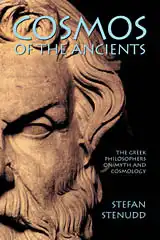 Cosmos of the Ancients
Cosmos of the Ancients
The Greek philosophers and what they thought about cosmology, myth, and the gods.
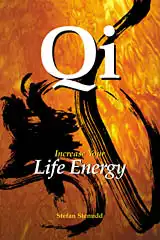 Qi — Increase Your Life Energy
Qi — Increase Your Life Energy
The life energy qi (also chi or ki) explained, with exercises on how to awaken, increase and use it.
 Aikido Principles
Aikido Principles
Basic concepts of the peaceful martial art. Aikido principles, philosophy, and fundamental ideas.
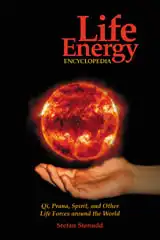 Life Energy Encyclopedia
Life Energy Encyclopedia
Qi, prana, spirit, ruach, pneuma, and many other life forces around the world explained and compared.
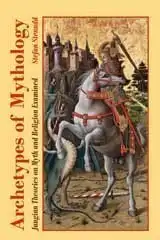 Archetypes of Mythology
Archetypes of Mythology
Jungian theories on myth and religion examined, from Carl G. Jung to Jordan B. Peterson.
 Stefan Stenudd
Stefan Stenudd
About me
I'm a Swedish author and aikido instructor. In addition to fiction, I've written books about Taoism and other East Asian traditions. I'm also an historian of ideas, researching ancient thought and mythology. Click the image to get to my personal website.Contact

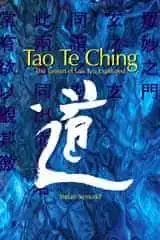 Tao Te Ching
Tao Te Ching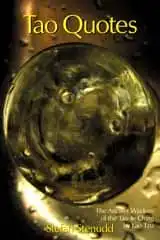 Tao Quotes
Tao Quotes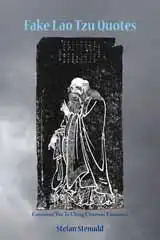 Fake Lao Tzu Quotes
Fake Lao Tzu Quotes